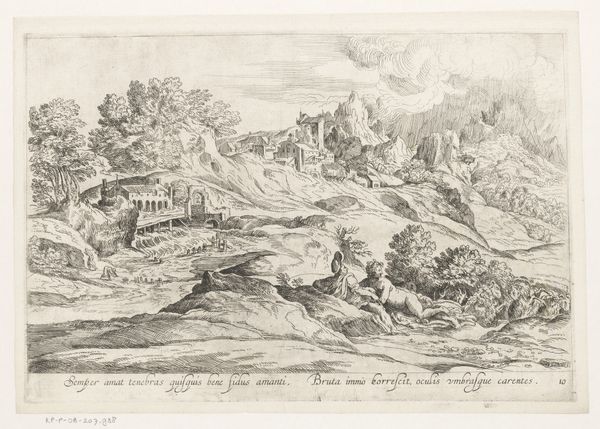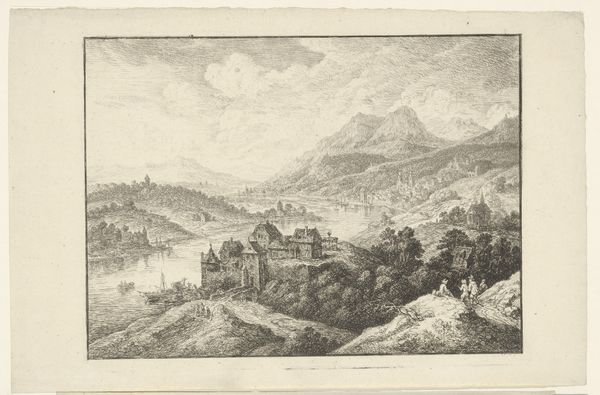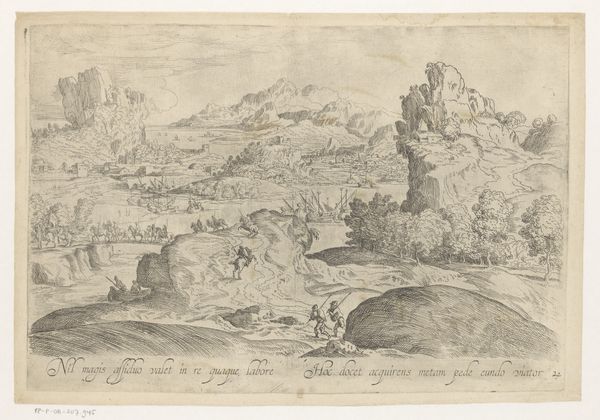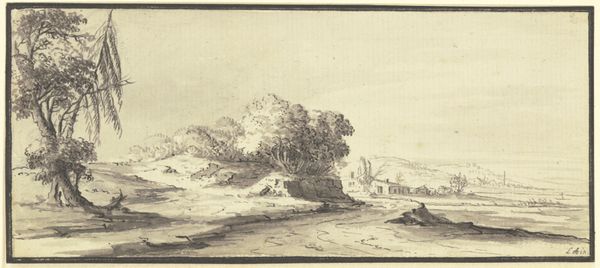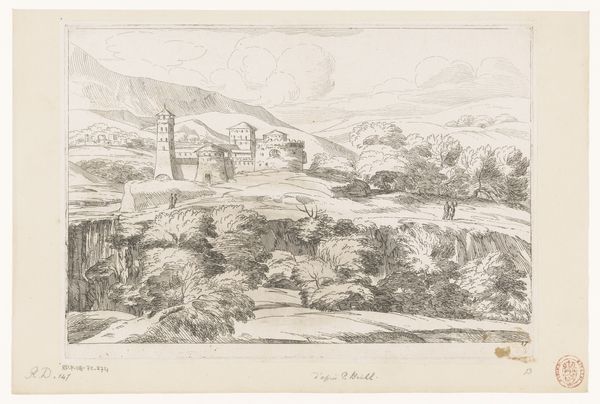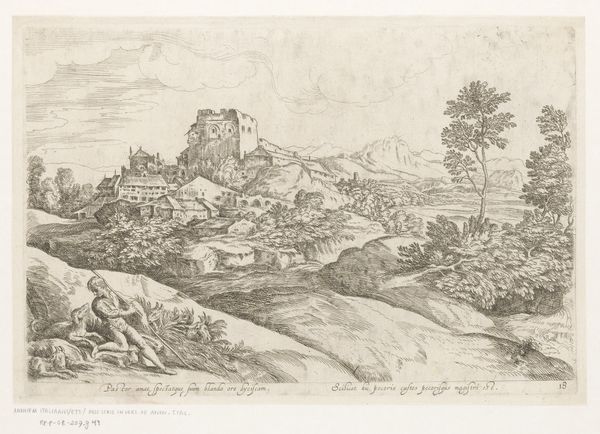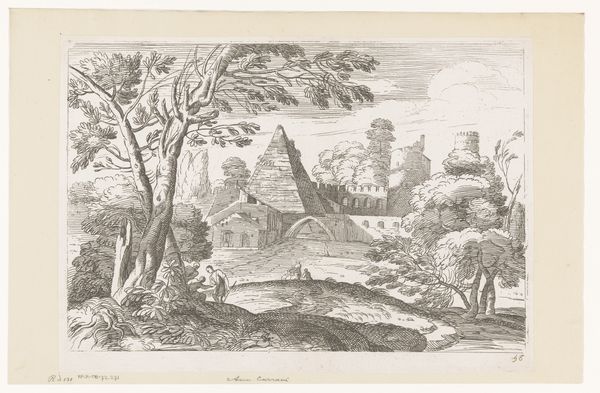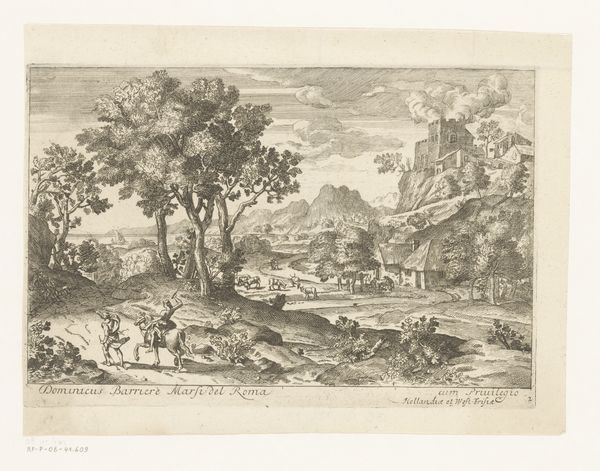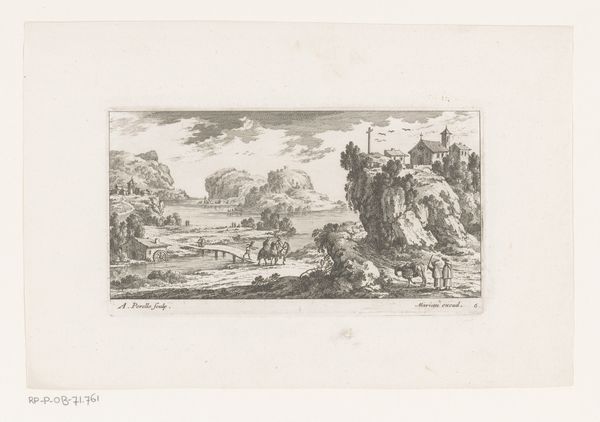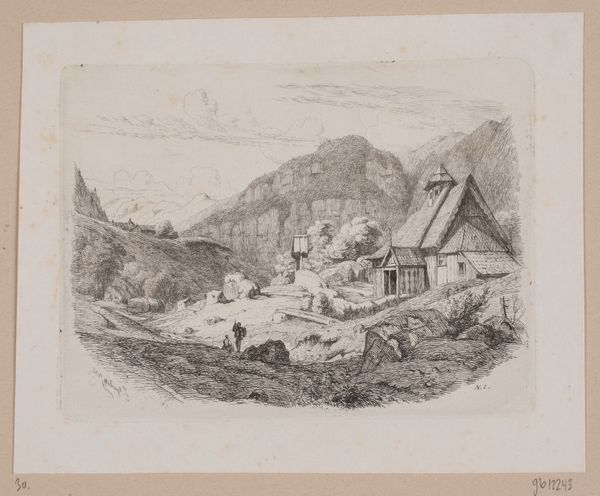
print, etching
#
baroque
# print
#
etching
#
landscape
#
etching
#
figuration
#
line
#
history-painting
Dimensions: height 290 mm, width 408 mm
Copyright: Rijks Museum: Open Domain
Editor: This is "Landscape with Resting Pilgrim" by Jean Pesne, created sometime between 1666 and 1695. It's an etching. The detail achieved through the etching technique is pretty remarkable. How would you interpret the context of this piece, with a particular focus on its creation process? Curator: Let's consider the materiality of printmaking in the 17th century. Etchings were relatively accessible compared to painting for a broader audience. The process, involving acid-resistant ground, meticulous scratching, and chemical baths, speaks to a specific kind of labor, a craft. Editor: That's interesting. It's reproducible but requires intense manual labor, right? The detail makes you think it was not easy. How does the landscape genre play into the socio-economic aspects you mentioned? Curator: Landscape in this era was often commissioned or purchased by individuals. The act of depicting and owning a landscape was directly connected to control, property, and status. Even a bucolic scene carries within it an unspoken social hierarchy. The depiction becomes a way to assert dominion. Editor: So the very act of creating and circulating the etching reinforced societal structures. Is there an inherent political aspect tied into that act? Curator: Precisely! The landscape itself is a construction—both literally and figuratively. It is built, populated, consumed. The ‘resting pilgrim’ isn’t just a devotional figure; he also symbolizes the human element acting and interacting with that controlled or labored landscape. Think of him less as pious and more a user of resources. What would happen if he were removed, or replaced with different subjects? Editor: Interesting! That certainly changes my view of the print, I am no longer focused on just the art of etching but about the role it served during its time. Thank you! Curator: My pleasure. Material production, it turns out, affects far more than aesthetics!
Comments
No comments
Be the first to comment and join the conversation on the ultimate creative platform.

